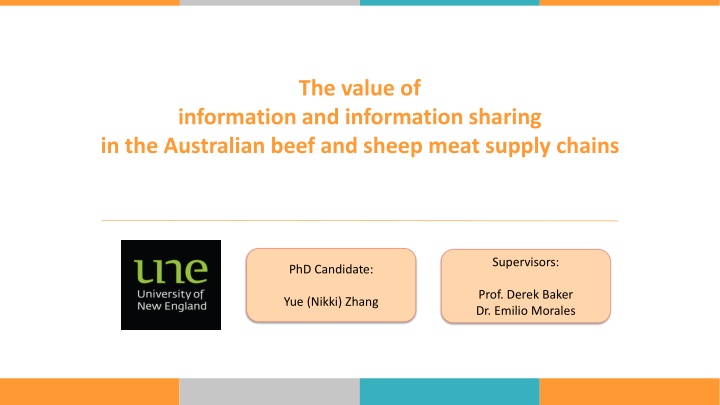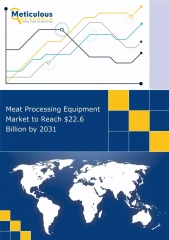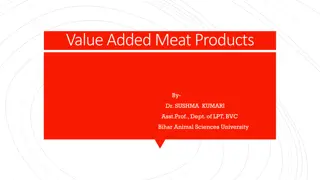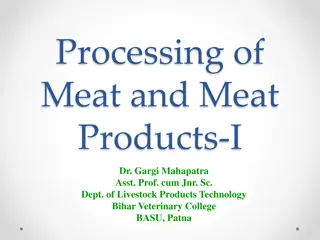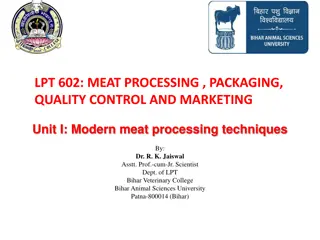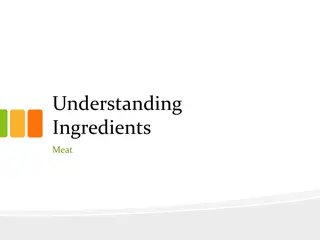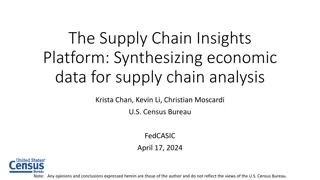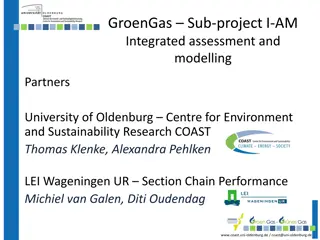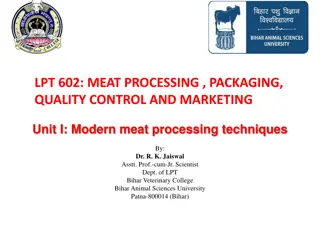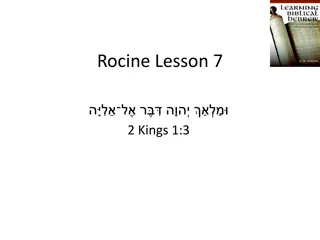Enhancing Information Sharing in Australian Meat Supply Chains
This research delves into the value of information and information sharing within the beef and sheep meat supply chains in Australia. It explores the benefits of improved decision-making, reduced costs, and enhanced supply chain performance through strategic information sharing. The study also identifies key gaps in research related to measuring information, optimizing sharing mechanisms, and the role of government in facilitating information provision.
Download Presentation

Please find below an Image/Link to download the presentation.
The content on the website is provided AS IS for your information and personal use only. It may not be sold, licensed, or shared on other websites without obtaining consent from the author.If you encounter any issues during the download, it is possible that the publisher has removed the file from their server.
You are allowed to download the files provided on this website for personal or commercial use, subject to the condition that they are used lawfully. All files are the property of their respective owners.
The content on the website is provided AS IS for your information and personal use only. It may not be sold, licensed, or shared on other websites without obtaining consent from the author.
E N D
Presentation Transcript
The value of information and information sharing in the Australian beef and sheep meat supply chains Supervisors: PhD Candidate: Prof. Derek Baker Dr. Emilio Morales Yue (Nikki) Zhang
1 Background 2 Research gap Presentation outline 3 Research problem 4 5 6 Research questions and objectives Research focus Theoretical framework and hypotheses 7 Research methodology and data sources 8 PhD thesis outline 9 PhD study timeframe
Background 3 The Australian beef and sheep meat supply chains Payments Payments Materials Materials Information Information
Background 4 SC information facilities inventory customers costs transportation prices
Background 5 Improve decision making Chopra & Meindl, 2016; Morgan, Anderson, & Mittal ,2005; Improve SC performance Value of information Hugos, 2011; Akerlof, 1970 Improve firms 'competitive advantage Racichandran, Lertongdstien, 2005; Porter and Millar, 1985; Nelson, 1970; Grunert, Bredahl, & Bruns , 2004; Shapiro & Varian, 2013; Cicia & Colantuoni, 2010; Loureiro& Umberger, 2007
Background 6 SC information sharing Strategic & tactical data
Background 7 Reduce the cost of information acquisition Reduce the Bullwhip Effect Value of information sharing H.L.Lee, Padmandabhan,& Whang,1997; Improve SC performance Choon Tan, Kannan, Hsu,& Keong Leong, 2010; S. Li& Lin, 2006; Premus & Sanders, 2008; Lin, Huang et al.,2002
Research gap 8 Identified key information and its measurement in the Australian beef and sheep meat SCs Value of information and information sharing in the Australian beef and sheep meat SCs Mechanism for optimal information sharing in the Australian beef and sheep meat SCs Role of government or governing agencies in optimal information provision and sharing
Research problem 9 The value of SC information The value of information sharing The value of information quality and quantity
Research questions and objectives 10 Research objectives Research questions Q1: What is the key information and its measures? O1: To identify the key information and its measures. Q2: What is the value of key information O2: To analyse the value of key information. Q3: What is the value of sharing key information O3: To analyse the value of sharing key information. O4: To analyse the value of information quality and quantity. Q2: What is the value of key information s quantity and quality Q5: What is the optimal mechanism for information sharing? O5: To identify the optimal mechanism for information sharing. O6: To characterise the role of government or governing agencies in the optimal sharing.
Research focus 11 1 Product quality information 2 Key information Upstream inventory information 3 End consumer demand information
Research focus 12 Product quality information carcass quality certified credence attributes MSA shelf life storage brand certified credence attributes MSA preferences and related WTP for product quality dimensions EBVs/ASBVs regarding meat quality breed weight certified credence attributes MSA
Research focus 13 Upstream inventory information The volume of beef- cattle/sheep at a point in time by different quality attributes The volume of beef/sheep carcass/ meat at a point in time by different quality attributes The volume of beef/ sheep meat at a point in time by different quality attributes
Research focus 14 End consumer demand information The volume of beef- cattle/sheep at a point in time by different quality attributes price The volume of beef/sheep carcass/ meat at a point in time by different quality attributes price The volume of beef/ sheep meat at a point in time by different quality attributes price
Theoretical framework and hypotheses 15 Firm s decision-making about information utilization and information sharing Information Potential cost Information sharing Absence Presence Information utilization Potential value Source of information cost Measured Analysis Shared by value Utilization Information quality Third parties Society Sharing Horizontal partners Industry Information quantity Vertical partners SC cost Others Firm
Theoretical framework and hypotheses 16 H1: Information is positively associated with several levels of performance. H2: The positive association between information and performance is strengthened by a higher degree of information quality and quantity. H3: Several levels of information sharing are positively associated with several Hypotheses levels of performance. H4: The positive association between information sharing and performance is strengthened by a higher degree of information quality and quantity. H5: These positive associations are moderated by market uncertainty, and government or governing agency intervention.
Research methodology 17 Q2: The value of key information Q3: The value of sharing key information Q4: The value of information quality and quantity Q1: Key information and its measure Statistical hypotheses testing Literature review Expert interview Contingent valuation Behavioural modelling optimization Q5: The optimal mechanism for information sharing
Measurements 18 Firm performance: cost reduction, profitability increase, on-time delivery, customer satisfaction SC performance: cost reduction, profitability increase, lead time reduction, ECR Industrial performance: meat quality, productivity, innovation Social performance: consumers' surplus Information: type, source, cost of collecting, purpose of collecting Information sharing: type, source, cost of collecting and sharing, key people, media, purpose of sharing Information quality: accuracy, timeliness, readability, relevance, credibility, comparability Information quantity: updated/sharing frequency, number of the information s variables or dimensions Market uncertainty: demand variability, market competition, changing of consumer preference Government/governing agency intervention: infrastructure, open data, legislation Firms characteristics: firm size, degree of specialization, stage of processing
Thesis outline 19 1 Chapter 1: Introduction 2 Chapter 2: Literature review 3 Chapter 3: Research methodology 4 Chapter 4: Hypotheses testing 5 Chapter 5: Contingent valuation 6 Chapter 6: Optimization modelling 7 Chapter 7: Conclusions and Implications
References Chopra, S., & Meindl, P. (2016). Supply chain management. Strategy, planning & operation: Springer. Morgan, N. A., Anderson, E. W., & Mittal, V. (2005). Understanding firms' customer satisfaction information usage. Journal of marketing, 69(3), 131-151. Hugos, M. H. (2011). Essentials of supply chain management 3rd Edition. John Wiley & Sons. Akerlof, G. (1970). The market for lemons : Quality uncertainty and the market mechanism. The Quarterly Journal of Economics 84(3),488-500 Ravichandran, T., & Lertwongsatien, C. (2005). Effect of information systems resources and capabilities on firm performance: A resource-based perspective. Journal of Management Information Systems, 21(4), 237-276. Porter, M. E., & Millar, V. E. (1985). How information gives you competitive advantage: Harvard Business Review, Reprint Service. Nelson, P. (1970). Information and consumer behaviour. Journal of political economy, 78(2), 311-329. Shapiro, C., & Varian, H. R. (2013). Information rules: a strategic guide to the network economy. Harvard Business Press. Grunert, K. G., Larsen, H. H., Madsen, T. K., & Baadsgaard, A. (1995). Market orientation in food and agriculture. Springer Science & Business Media. Cicia, G., & Colantuoni, F. (2010). Willingness to pay for traceable meat attributes: a meta-analysis. International Journal on Food System Dynamics, 1(3), 252-263. Loureiro, M. L., & Umberger, W. J. (2007). A choice experiment model for beef: What US consumer responses tell us about relative preferences for food safety, country-of- origin labeling and traceability. Food policy, 32(4), 496-514. Global Logistics Research Team at Michigan State University. (1995). World class logistics: the challenge of managing continuouschange. Council of Logistics Management, Oak Brook, IL, 183-215. Lee, H. L., Padmanabhan, V., & Whang, S. (1997). Information distortion in a supply chain: The bullwhip effect. Management Science, 43(4), 546-558. ChoonTan, K., Kannan, V. R., Hsu, C.-C., & Keong Leong, G. (2010). Supply chain information and relational alignments: mediators of EDI on firm performance. International Journal of Physical Distribution & Logistics Management, 40(5), 377-394. Li, S., & Lin, B. (2006). Accessing information sharing and information quality in supply chain management. Decision support systems, 42(3), 1641-1656. Premus, R., & Sanders, N. R. (2008). Information sharing in global supply chain alliances. Journal of Asia-Pacific Business, 9(2), 174-192. Lin, F. r., Huang, S. h., & Lin, S. c. (2002). Effects of information sharing on supply chain performance in electronic commerce. Engineering Management, IEEE Transactions on, 49(3), 258-268.
Supervisors: PhD Candidate: Prof. Derek Baker Dr. Emilio Morales Yue (Nikki) Zhang
